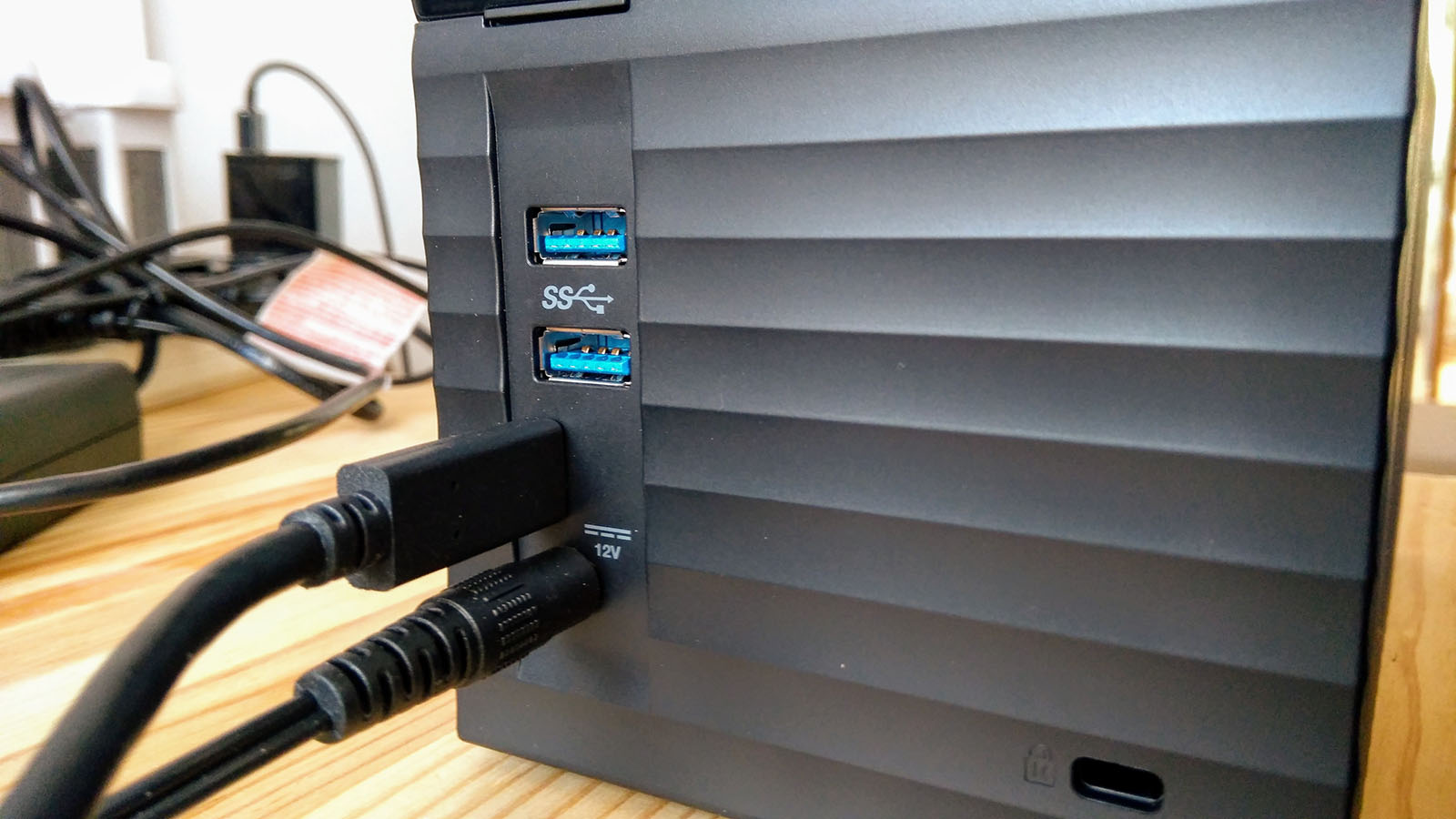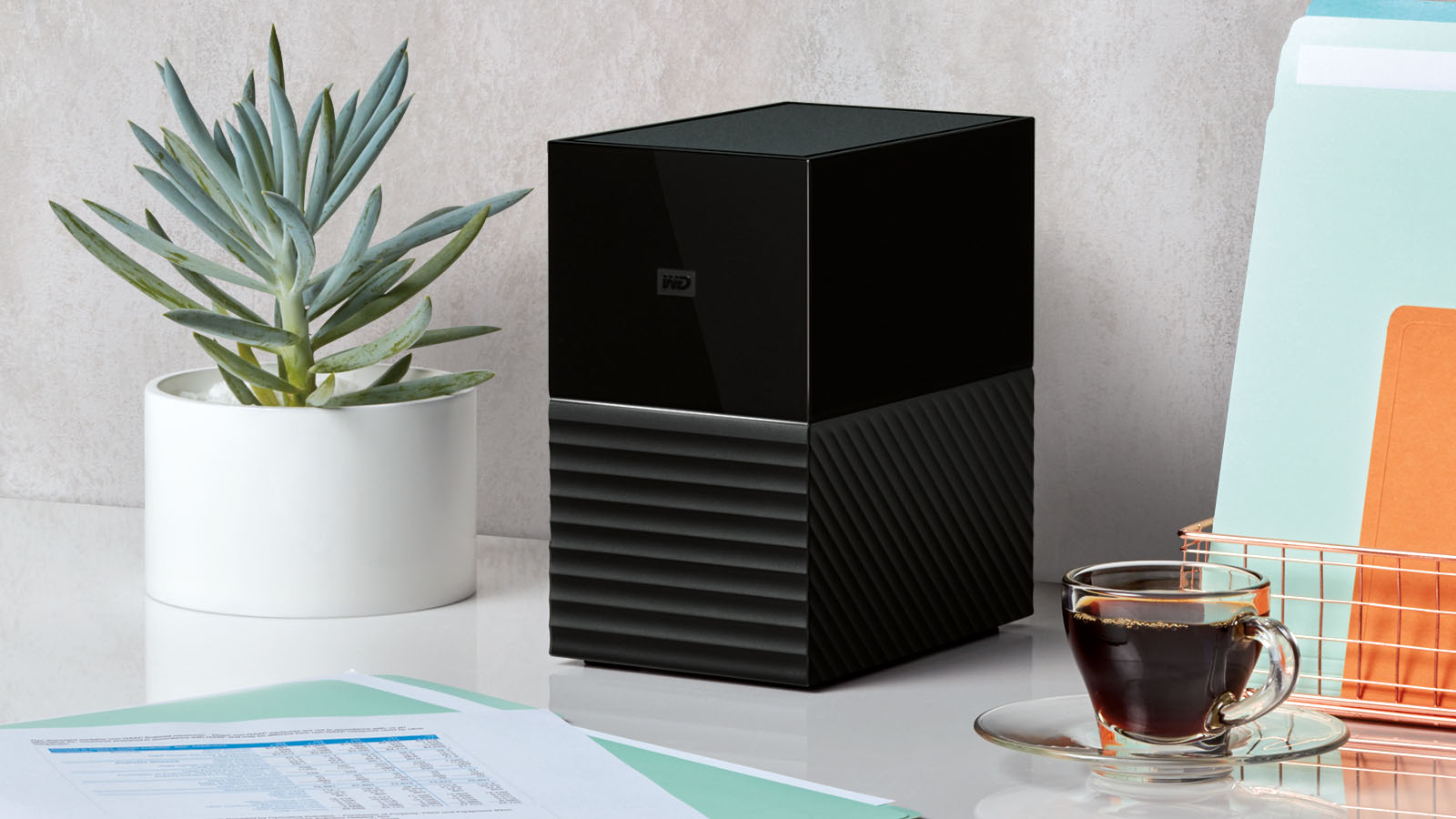TechRadar Verdict
As a personal secure data store or backup device for a NAS box, the My Book Duo 20TB is a very effective solution and remarkably good value for money.
Pros
- +
Huge amount of storage
- +
Easy to configure
- +
Added USB 3.0 hub
Cons
- -
Mostly plastic build
- -
Gloss black attracts dust
Why you can trust TechRadar
Most people these days are accumulating increasingly large amounts of personal data. Housing it on just one computer drive is inadvisable for obvious reasons, so we're drawn to archive this data either to the cloud, NAS storage or external backup drives.
As a hard drive manufacturer, Western Digital is keen to support these trends and includes all manner of personal storage solutions in its product range.
While not the first firm to build dual-drive storage systems, with the My Book range, Western Digital certainly popularized the idea.
Earlier models offered relatively slow USB 2.0 connections, and the drives weren’t user upgradable. Western Digital’s latest designs, like the new My Book Duo, are a long way from those origins.
Now they sport USB 3.0 connectivity, interchangeable drives and huge capacities that only a few years ago would have seemed unimaginable.

Design
The inherent advantage of a dual-drive solution is that you can either have double the capacity or twice the security, depending on how you choose to configure it.
And, by providing a solution where the drives are accessible, your storage solution can be repaired if a drive fails, or be upgraded to larger capacity storage when you need that.
Sign up to the TechRadar Pro newsletter to get all the top news, opinion, features and guidance your business needs to succeed!
The new My Book Duo has diverged in one major way from the previous designs; the rather lame ‘Book’ analogy has finally been terminated.
While it’s still a ‘My Book’ product, the new hardware looks much more like what it truly is; a tiny desktop server.
Once you’ve removed the dust summoning plastic protection, the new My Book Duo is a monolithic black plastic slab of which the bottom half has a wavy texture, while the top portion has a mirror finish gloss. Within minutes of the unveiling, all the dust in our office had headed on over to see what the fuss was about.
When powered up the front of the unit has a pencil-thin line of white light that gently pulses away to indicate drive activity. It’s all very minimalist and rather slick if you admire that aesthetic, and don’t mind using a duster.
Connection to your computer is via USB Type-C, and cables come for both this standard and to convert a conventional USB 3.0 port to the Type-C variety if you haven’t embraced that newish connector yet.
WD notes that this is a USB 3.1 Gen 1 port, omitting to state that this is what USB 3.0 is called these days. That connection has plenty of bandwidth for the output of two conventional hard drives even if they’re configured in striped RAID 1, and any extra can be used by other devices connected via a USB 3.0 hub.
This provides two additional USB 3.0 ports at the rear, allowing you to use the My Book Duo as a basic docking station, or even to chain additional storage devices should you wish.

Drive selection
The supplied review model was the monster 20TB (maximum) capacity affair using dual 10TB drives – priced at £620/$850 – though the same outer shell comes with 4TB, 6TB, 8TB, 12TB and 16TB options, using 2TB, 3TB, 4TB, 6TB and 8TB drives respectively.
On the 20TB model in RAID 0, striped mode, you have a capacity of about 18.1TB available to use from the outset.
Striping is the default configuration. If you’d prefer a mirroring, it would be best to configure that using the provided software tools before loading any data – because any changes to the drive layout will delete all the data on there during the configuration process.
Incidentally, you can also set the unit to JBOD (which stands for ‘just a bunch of drives’), where each drive becomes a single volume/logical drive. We’re not sure why you might want to go this route, as it offers no redundancy against drive failure (like mirroring) or performance benefits (striping). But anyway, the option is there.
A small plastic tool is included for you to pop the top of the unit off and access the drives inside for replacement. The drives are mounted on tool-less trays that slide out easily.
Being so accessible, the temptation is to consider buying a 4TB model and then source larger drives for installation. However, when you consider that the 20TB My Book sells for £620 in the UK, and the bare WD Red 10TB drives are £449 apiece – well, you do the maths.
Based on those numbers, it may also be the case that the cheapest way to buy these drives currently is to purchase the My Book Duo, even if you don’t want the external housing, perversely. Just remove the drives from the unit.
If you’re happy with your existing software mechanisms to transfer data from the computer to the My Book Duo, then you can just plug it in and go. However, Western Digital has cooked up a suite of tools that enhance the experience for those who can be bothered to install them.

Software
Pre-installed on the My Book Duo is the WD Discovery tool that allows for the downloading and installing of WD Drive Utilities, WD Backup and WD Security software.
Of these, the WD Drive utilities are the most vital, as they allow you to change the RAID configuration of the Duo.
The backup tool is basic though serviceable, allowing you to secure specific local folders hourly, daily or monthly. You can set up multiple schedules, allowing different frequencies of backup for each folder structure specified.
The fact that Western Digital still doesn’t bundle a live backup tool with its devices is a disappointment, but there are plenty of software products (some even free) that will do this for you if you prefer not to lose an hour’s work through a crash or power cut.
The security tool enables you to utilize the 256-bit AES hardware encryption and define a password that is required to unlock the drive. A nice twist to this is that you can pre-sanction the computer you are using, though moving the drive to another system would then automatically initiate a password request.
As strong as this potentially can be, password quality aside, it does rely on the owner not forgetting it. Because without the password or the machine it was originated on, the data is utterly irretrievable.
In overall terms, the included WD software does enough to be useful, without going any further than that.

Performance
Having massive amounts of storage capacity attached to your system isn’t much use if it’s slow to access.
That’s not an issue with this hardware, which admirably demonstrates what the WD Red WD100EFAX drives can achieve with 256MB of cache, and seven platters of spinning rust.
The quoted transfer speed for the bare mechanisms is 210 MB/s, and in JBOD mode that’s almost exactly what you get.
Using RAID 0 striping yields a boost of 335MB/s read and 317MB/s writes, and a RAID 1 mirror trades back down to 205MB/s reads and 208MB/s writes, paralleling JBOD speeds.
For a storage system that doesn’t utilize SSDs, this is surprisingly quick, even if much of the sparkle is courtesy of the helium-filled wonders that Western Digital’s drive engineering department contributed.
As a final note, you get a three-year warranty with the My Book Duo.
Final verdict
The WD My Book Duo (2017 edition) is certainly a class act that combines new styling with excellent performance and potentially massive capacities.
A minor criticism is that the shiny black plastic finish on the case attracts dust, but can look lovely if you give it the occasional wipe with a soft cloth.
Where this device truly shines is in the terrific performance of the 10TB WD RED drives that give this unit more zip than physical hard drives normally deliver.
As a personal secure data store or backup device for a NAS box, the My Book Duo 20TB is a very effective solution and remarkably good value for money.
- We’ll help you pick out the best external hard drive
Mark is an expert on 3D printers, drones and phones. He also covers storage, including SSDs, NAS drives and portable hard drives. He started writing in 1986 and has contributed to MicroMart, PC Format, 3D World, among others.

